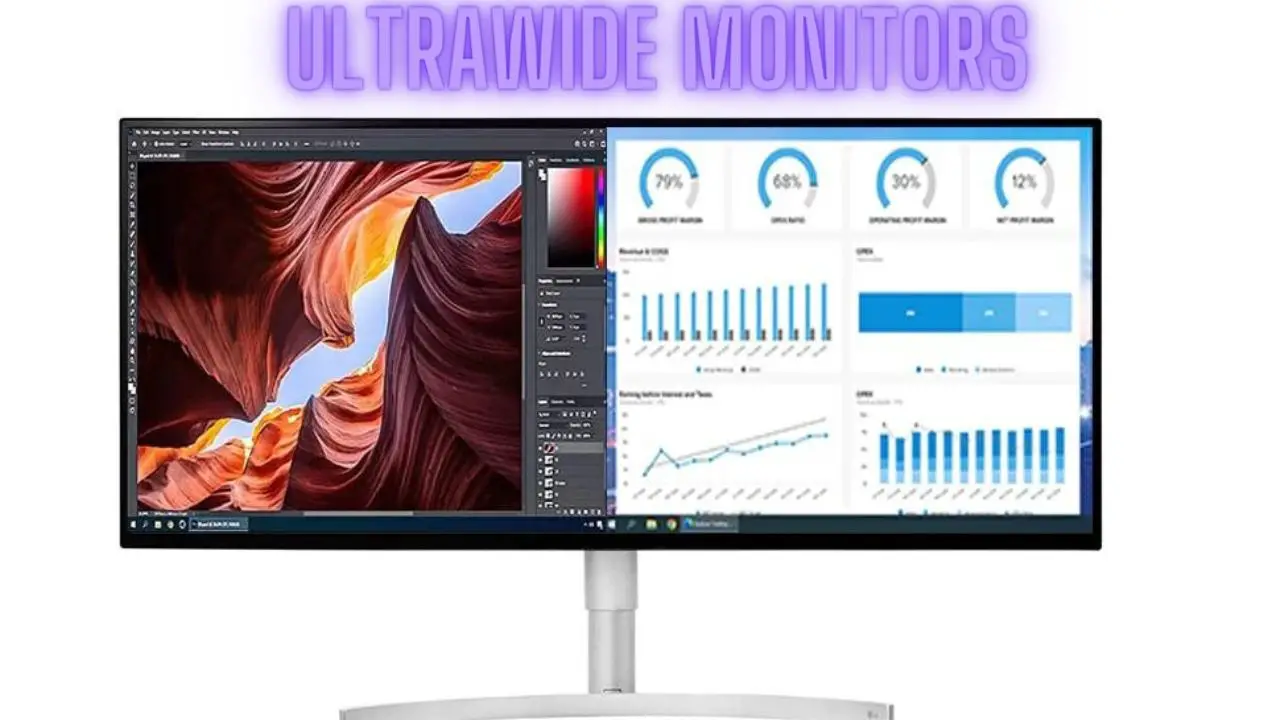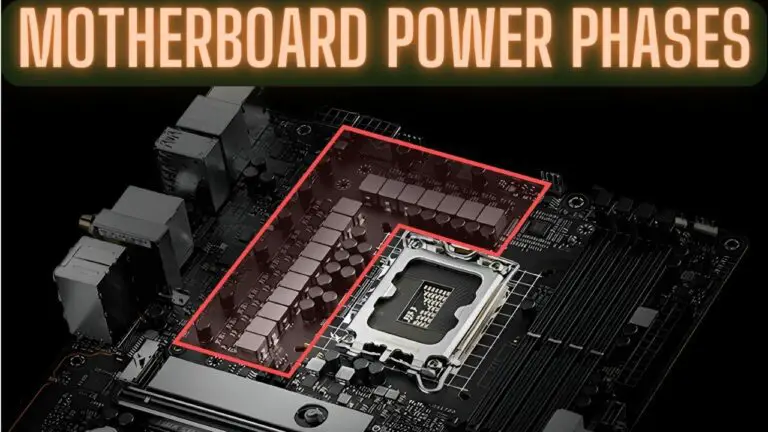Ultrawide Monitors: How to Split a Wide Screen Monitor into Two?
Introduction
In the realm of computer displays, ultrawide monitors have taken center stage as the go-to choice for users seeking enhanced productivity, immersive gaming experiences, and efficient multitasking. What sets ultrawide monitors apart is their widescreen aspect ratio, typically 21:9 or even wider, compared to the traditional 16:9 ratio found in most standard monitors. This extra horizontal screen real estate enables an array of possibilities, with one of the standout features being split-screen multitasking.
Understanding Ultrawide Monitors:
Ultrawide monitors, sometimes referred to as ultrawide screens or ultrawide displays, offer an expansive horizontal space that provides a panoramic view. The most common ultrawide aspect ratio is 21:9, but you can also find even wider options like 32:9. These monitors are available in various sizes, ranging from 29 inches to over 49 inches diagonally.
Split Screen Functionality:
One of the primary advantages of ultrawide monitors is their ability to split the screen into multiple sections, allowing you to run and view multiple applications simultaneously. This feature enhances productivity by reducing the need for multiple physical displays or constant alt-tabbing between applications. Here’s how split-screen functionality works on ultrawide monitors:
1. Window Management:
- Ultrawide monitors come with built-in software or on-screen display (OSD) controls that enable you to divide the screen into two or more sections. You can arrange open windows into these sections as needed.
2. Customization:
- You have the flexibility to customize the size and position of each split-screen section. This means you can allocate more screen space to the applications you use most frequently.
3. Multitasking Made Easy:
- Split-screen multitasking is perfect for various scenarios. For example, you can have a web browser open on one side while you work on a document or spreadsheet on the other. Gamers can use it to monitor chat or guides while playing a game.
Benefits of Ultrawide Monitors’ Split Screen Feature:
- Enhanced Productivity: Ultrawide monitors are a boon for professionals who rely on multitasking. Graphic designers, video editors, programmers, and office workers can efficiently manage multiple windows or applications side by side.
- Streamlined Workflow: With the extra screen real estate, you can arrange applications and documents in a way that makes sense to you, improving your workflow and reducing clutter on your desktop.
- Gaming Advantage: Gamers can benefit from split-screen functionality by having a game open on one side and keeping an eye on chat, live streams, or guides on the other.
- Entertainment Immersion: Ultrawide monitors provide an immersive experience when watching movies or streaming content. You can have the video playing in one section and supplementary information or a chat window in another.
- Fewer Distractions: Splitting the screen helps you stay focused by minimizing distractions. You can separate work from personal tasks, eliminating the need to switch between different desktops or displays.
Considerations When Using Split Screen:
While ultrawide monitors are fantastic for split-screen multitasking, there are a few considerations to keep in mind:
- Resolution: Ensure your monitor has a high enough resolution to maintain clarity and detail when dividing the screen into multiple sections.
- Graphics Card: Your graphics card should support the monitor’s resolution and the number of applications you intend to run simultaneously.
- Ergonomics: Consider monitor placement and ergonomics to prevent neck strain. Adjust the screen and chair height to maintain a comfortable viewing angle.
- Compatibility: Some applications and games may not fully support ultrawide resolutions or may require custom settings for optimal performance.
How to Split a Wide Screen Monitor into Two?
Splitting a widescreen monitor into two or more sections, also known as split-screen multitasking, can greatly enhance productivity and multitasking capabilities. To achieve this on a widescreen monitor, you can use built-in features, third-party software, or your computer’s operating system. Here are some methods to split a widescreen monitor into two or more sections:
1. Use Built-In Monitor Features:
Many modern widescreen monitors come with built-in features that allow you to split the screen into multiple sections. Here’s how to do it:
- Monitor Buttons: Some monitors have physical buttons that let you access on-screen display (OSD) controls. Check your monitor’s manual to find the button for screen splitting or picture-in-picture (PiP) functionality.
- OSD Menu: Access the OSD menu on your monitor using the appropriate button, and look for options related to screen splitting. You can typically choose from preset layouts or customize the screen arrangement.
2. Use Your Computer’s Operating System:
You can also split your widescreen monitor into two sections using your computer’s operating system. Here’s how to do it on Windows and macOS:
On Windows:
- Snap Feature: Windows 10 and later versions include a feature called “Snap.” To split your screen into two sections, drag a window to either side of the screen until it snaps into place. You can also press the Windows key + left or right arrow key to snap a window to the left or right side of the screen.
- Task View: You can use Task View (Windows key + Tab) to create multiple virtual desktops and arrange windows on each desktop. This allows for more flexible multitasking.
On macOS:
- Split View: macOS offers a Split View feature that allows you to split the screen between two apps. Click and hold the green “Maximize” button in the top-left corner of a window, then choose the left or right side to split the screen.
3. Use Third-Party Software:
If your monitor or operating system doesn’t provide the split-screen functionality you need, you can use third-party software. Some popular options include:
- DisplayFusion (Windows): DisplayFusion is a paid utility that offers advanced multi-monitor and split-screen management features. It allows you to create custom split-screen layouts and manage application windows efficiently.
- Divvy (Windows and macOS): Divvy is a paid application that enables you to create custom window layouts and easily arrange windows into sections on your screen.
- AquaSnap (Windows): AquaSnap is a free and paid window management tool that provides features like window snapping, window docking, and grid-based window organization.
4. Use Monitor Splitter Cables:
Some monitors support split-screen functionality using specific splitter cables or connectors. These cables allow you to connect two different sources (e.g., two computers) to your monitor, and the monitor can display both sources side by side. Check your monitor’s specifications and documentation to see if it supports this feature and what type of cables are required.
5. Use Graphics Card Software:
Graphics card software, such as NVIDIA’s Control Panel or AMD’s Radeon Software, may offer additional options for arranging and splitting your screen. These settings can be accessed through the respective graphics card control panels.
Remember to consult your monitor’s user manual and your operating system’s help documentation for specific instructions and compatibility. With the right setup, you can maximize your productivity and make the most of your widescreen monitor’s screen real estate.
Ultrawide Monitors FAQS
1. What is an ultrawide monitor?
An ultrawide monitor is a type of computer monitor with an extra-wide aspect ratio, typically 21:9 or wider. This aspect ratio provides a wider horizontal viewing area compared to standard 16:9 monitors.
2. What are the advantages of using an ultrawide monitor?
Ultrawide monitors offer several benefits, including increased screen real estate for multitasking, enhanced productivity, an immersive viewing experience for gaming and media consumption, and reduced need for multiple physical displays.
3. What sizes are ultrawide monitors available in?
Ultrawide monitors come in various sizes, typically ranging from 29 inches to over 49 inches diagonally. The most common sizes are 34 inches and 35 inches.
4. Can I split an ultrawide monitor into multiple sections for multitasking?
Yes, many ultrawide monitors support split-screen multitasking. You can divide the screen into multiple sections and run different applications simultaneously. This feature is often available through built-in monitor software or your computer’s operating system.
5. Are ultrawide monitors good for gaming?
Ultrawide monitors are excellent for gaming, providing an immersive gaming experience with a wider field of view. Many games support ultrawide resolutions, allowing you to see more of the game world.
6. Do I need a special graphics card for an ultrawide monitor?
While you don’t necessarily need a special graphics card, it’s recommended to have a graphics card that can handle the monitor’s resolution for optimal performance. High-end graphics cards are often preferred for gaming on ultrawide monitors.
7. Are ultrawide monitors suitable for professional work, such as video editing and graphic design?
Yes, ultrawide monitors are well-suited for professional work. The extra screen real estate allows for efficient multitasking and better workflow organization. The wide color gamut and high resolutions found in some models make them ideal for tasks like video editing and graphic design.
8. How do I split the screen on an ultrawide monitor for multitasking?
You can split the screen on an ultrawide monitor by using built-in monitor features (if available), your computer’s operating system (e.g., Windows Snap or macOS Split View), or third-party software designed for managing window layouts.
9. Can I use an ultrawide monitor as a replacement for dual monitors?
Yes, an ultrawide monitor can be a suitable replacement for dual monitors in many cases. Its wide screen real estate allows you to have multiple windows open side by side, reducing clutter and the need for multiple displays.
10. Are there any downsides to using an ultrawide monitor?
While ultrawide monitors offer numerous advantages, they may not be suitable for everyone. Some potential downsides include the need for a larger desk space, higher cost compared to standard monitors, and limited compatibility with older games and applications that may not support ultrawide resolutions.
Conclusion
In conclusion, ultrawide monitors with split-screen functionality have revolutionized the way we work, play, and consume content. Their ability to accommodate multiple applications simultaneously offers a productivity boost, simplifies multitasking, and enhances the overall computing experience. Whether you’re a professional seeking efficient workflow or a gamer looking for an edge, the ultrawide monitor’s split-screen feature is a game-changer.







